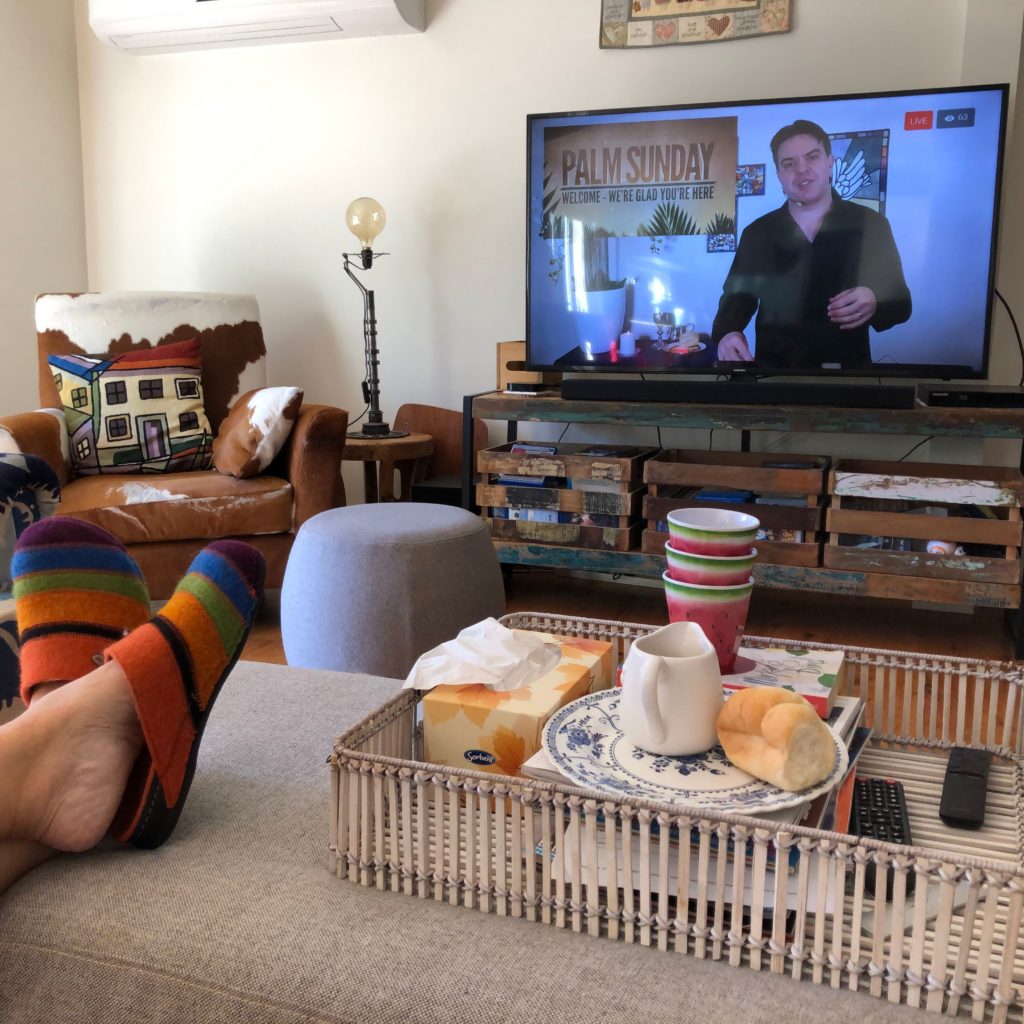With the COVID-19 pandemic easing somewhat (as NSW, the ACT, and other states and territories have ‘double donut days’ with zero deaths and zero new cases) churches are already looking ahead. With restrictions still in place, and only a certain number of people allowed to be present for worship, the ‘hybrid’ model of church service has become something of a new norm. Under this model, a small group of people gather in the church service to worship in person, while others join online. This ‘in person, but also live streamed’ model may be here to stay, as churches take away new lessons from the pandemic.
The US-based Barna group conducted research into worship patterns in the United States during the pandemic. Their wide-ranging study was intended as a “snapshot” of this unique period in history. Barna asked churched individuals to share their experience of attending virtual worship, and what they would like to see remain in place once COVID-19 is deemed to no longer be a threat.
As it is an American study, its results may not be entirely replicated in Australia, which has its own distinct cultures regarding understandings of ‘church’, worship, and a different set of internet infrastructure to support online worship. However, its findings are nonetheless interesting, and can be paired with a similar Australian study released more recently by the Australian-based McCrindle consultancy. The Future of the Church in Australia is the result of in-depth interviews with thirty church leaders as well as more than 1000 church-going Australians.
Mark McCrindle, whose firm conducted the research, has suggested that he thinks the hybrid model is a positive for many who may otherwise miss out on church. In an interview with Sight Magazine, he highlighted this advantage.
“It might mean that there is a bit more regularity of attendance and maybe not everyone every week in church but in the weeks when someone can’t particularly [attend in person]…they can still go online…” Mr McCrindle said, noting this may include young families, older people, or those living in remote locations.
“So it might, if we add up [those] online and those in church…actually from an attendance perspective increase the frequency.”
There is a practical reason to think that the hybrid service may be here to stay: not everyone can make it into the church building due to Coronavirus restrictions. As the physician and journalist Dr Norman Swan has told the ABC’s Caronacasta few times, a vaccine will not mean that COVID-19 goes away. With the virus further mutating, the time it takes to roll the vaccine out, and a relatively small number of people refusing to take any vaccine, it is more likely that dealing with the Coronavirus remains part of our lives for the immediate future.
Innovation
Beyond this, COVID-19 has forced churches to innovate new ways of conducting services, and these new models seem unlikely to simply revert to older models once the pandemic has lifted.
The Barna report found that, while people are keen to resume in-person worship when it is safe to do so, the appetite is still there among some churchgoers to keep hybrid services.
Of those churched adults that Barna spoke to, one in five had what the research team deemed “high digital openness” to online and hybrid services. In this study, respondents fitting in the ‘millennial’ age bracket (born between 1984 and 1993) favoured having the option to worship online.
Churches wishing to pursue the hybrid model after COVID-19 may find there are pitfalls, however. One problem that both studies identified was people dropping out.
The Barna study found that during the pandemic, one in five people who self-nominated as Christian said that they never attended a church service, in person or online. Similarly, the McCrindle study found that those Australians who said they were attending weekly dropped from 61 per cent to 22 per cent during the coronavirus period.

Another potential pitfall of the new model is that online worship requires additional work for ministers, who are oftentimes already busy and dealing with potential burnout.
Back in June, Insights spoke to several ministry agents about how the shift to digital worship had affected their workloads, with all indicating that this had increased as a direct result.
Rev. Alimoni Taumoepeau indicated that the phrase “new normal” applied to how work had shifted for himself as a minister.
“The workload increased for me during COVID-19, as I had to have everything ready in time to be printed, recorded and even put out live,” he said.
“This demands extra study and research time as well as more coordination and discipline. Because I was readily accessible through Zoom, it was easier to organise meetings and more people you can meet with not only at one time but throughout the day. I realise a huge rise in the number of meetings I was participating in and more variety than ever before.
An Unknown Future
While there is every indication that the hybrid church model is here to stay, there is some reason to be cautious about predicting what the future church may look like.
As Mark McCrindle told Sight Magazine about his own organisation’s research, numbers of attendees will be one factor that will be difficult to predict after the pandemic is over.
“I think it is going to take a little while before we work out, when the dust settles, how many are still [in a congregation] – have we gone up or have we gone down?” he said.
“The church has an older profile and older Australians have been more rattled by the health impacts of this and are going to be slower to come back…We really are in a new era and the church leaders say they really do not know when it all settles how they will be.”
Main picture: New Beginnings Uniting Church prepares online worship.











